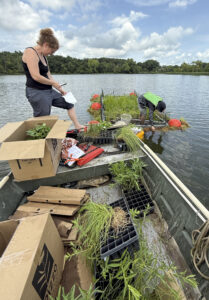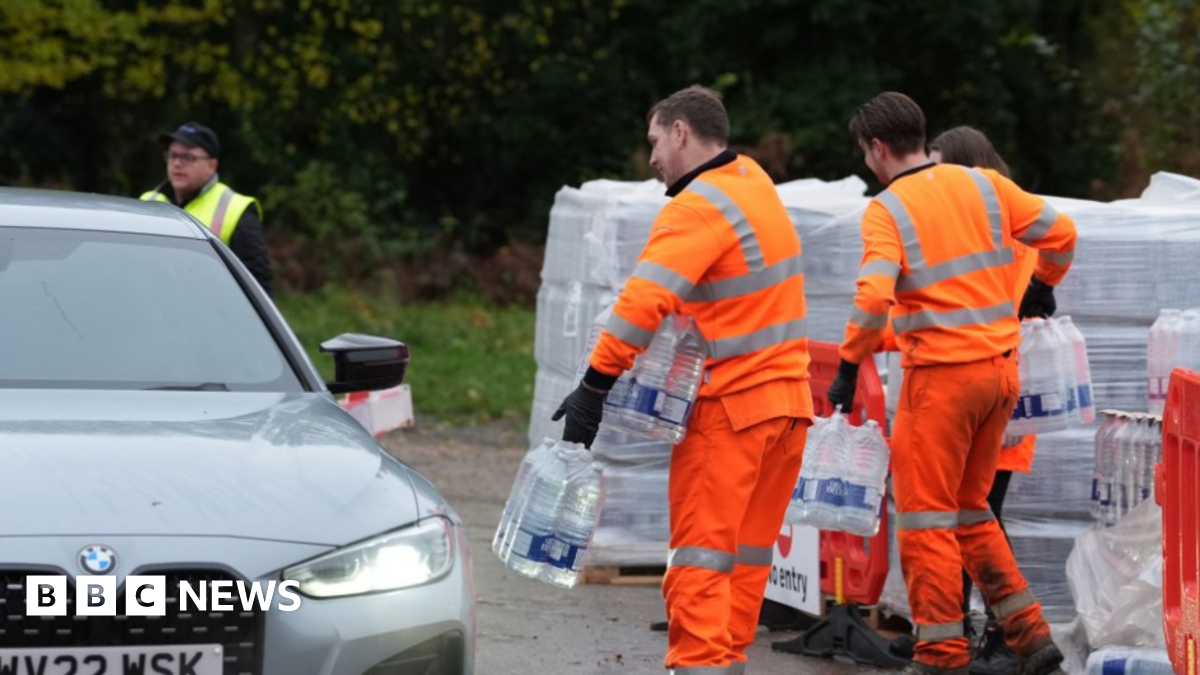UAE Water Purifiers Market Trends, Competition, Forecast – GlobeNewswire

UAE Water Purifiers Market Report: Analysis of Growth, Trends, and Alignment with Sustainable Development Goals (2024-2030)
Executive Summary
The United Arab Emirates (UAE) Water Purifiers Market is projected to experience significant growth, expanding from a valuation of USD 35.28 million in 2024 to USD 52.96 million by 2030, at a Compound Annual Growth Rate (CAGR) of 7.05%. This market expansion is intrinsically linked to the nation’s commitment to the United Nations’ Sustainable Development Goals (SDGs), particularly SDG 3 (Good Health and Well-being) and SDG 6 (Clean Water and Sanitation). The increasing adoption of water purification technology by residential and commercial sectors reflects a proactive approach to ensuring public health and securing sustainable water resources, in line with national strategies such as the UAE National Water Strategy 2036.
Market Dynamics and Contribution to Sustainable Development Goals
The market’s trajectory is shaped by several key drivers, challenges, and trends that directly impact the UAE’s progress toward achieving its SDG targets.
Key Market Drivers Aligned with SDGs
- Advancing SDG 3 (Good Health and Well-being) and SDG 6 (Clean Water and Sanitation)
A primary driver is the heightened public awareness regarding the health implications of water contamination. With over 78% of residents expressing concern over water quality, the demand for purifiers is a direct response to mitigating health risks from contaminants like heavy metals, bacteria, and high salinity. This consumer-led action actively supports SDG 3 by reducing the incidence of waterborne diseases and promotes the core objective of SDG 6: ensuring universal access to safe and affordable drinking water. - National Policy and Urbanization in Line with SDG 11 (Sustainable Cities and Communities)
Rapid urbanization and the expansion of hospitality and healthcare sectors increase the demand for reliable clean water infrastructure. Government initiatives, including awareness campaigns reaching over 2 million residents, reinforce the importance of water quality. These efforts support the development of sustainable cities under SDG 11, where access to essential services like clean water is fundamental for creating safe and resilient urban environments.
Market Challenges Impacting SDG Attainment
- Equity and Accessibility Challenges (SDG 6)
The high initial investment and ongoing maintenance costs for advanced water purification systems, such as Reverse Osmosis (RO), pose a significant barrier to universal access. This economic challenge can hinder the progress of SDG 6’s goal of providing equitable and affordable drinking water for all segments of the population, particularly middle-income households. - Environmental Considerations and SDG 12 (Responsible Consumption and Production)
Certain purification technologies, especially RO systems, generate significant water wastage during the filtration process. This raises concerns related to sustainable water management and responsible consumption patterns, as outlined in SDG 12. The disposal of used filters also contributes to waste, highlighting a need for more sustainable product lifecycles.
Market Trends Supporting Sustainability Goals
- Adoption of Smart Technology for SDG 12
A prominent trend is the growing adoption of smart and IoT-enabled water purifiers. These technologies align with SDG 12 by promoting resource efficiency. Smart features allow users to monitor water quality in real-time, track filter life to reduce premature replacement, and optimize water and energy consumption. This trend supports the UAE’s broader digital transformation and contributes to more sustainable consumption patterns within smart homes and cities (SDG 11).
Market Segmentation Analysis
Understanding the market’s structure is crucial for targeting interventions that accelerate progress towards the SDGs.
By Type:
- Countertop
- Under Sink
- Faucet Mount
- Others
By Technology:
- RO
- UF
- Nanofiltration
- Others
By End Use:
- Residential
- Commercial
By Sales Channel:
- Distributors/Dealers
- Multi-Branded Stores
- Online
- Supermarkets/Hypermarkets
- Others
By Region:
- Dubai
- Abu Dhabi
- Sharjah
- Ajman
- Rest of UAE
Competitive Landscape
The market features several key players who are instrumental in innovating and deploying solutions that contribute to the nation’s health and sustainability objectives.
Key Market Players:
- Aquaguard UAE
- Kent UAE
- A.O. Smith Corporation
- Midea Middle East
- BRITA SE
- Koninklijke Philips N.V.
- So~Safe Products LLC
- Livpure Private Limited
- Sachisa Water Filters Technology LLC
- Electrolux Appliances Middle East
Analysis of Sustainable Development Goals in the Article
1. Which SDGs are addressed or connected to the issues highlighted in the article?
-
SDG 6: Clean Water and Sanitation
- The entire article revolves around the provision of clean and safe drinking water. It directly addresses issues of “water quality,” “increasing contamination in water sources, including high salinity and pollutants,” and the goal to “secure sustainable access to clean water.” The market for water purifiers exists as a direct response to the need for clean water, which is the core of SDG 6.
-
SDG 3: Good Health and Well-being
- The article explicitly links water quality to public health. It states that a key driver for the market is “increasing health awareness” and concerns about the “adverse effects of consuming contaminated or untreated water.” It mentions specific health risks like “gastrointestinal illnesses, skin issues, and long-term chronic conditions” caused by contaminants, directly connecting the issue to health and well-being.
-
SDG 9: Industry, Innovation, and Infrastructure
- The article highlights the role of technology and innovation in addressing water quality challenges. It discusses “technological innovations, such as UV, RO, and activated carbon filtration” and a key market trend of “growing adoption of smart and IoT-enabled water purifiers.” This focus on advanced technology and the growth of the water purifier industry aligns with SDG 9’s emphasis on innovation and industrial development.
-
SDG 11: Sustainable Cities and Communities
- The article notes that “rapid urbanization” is a factor boosting demand for water purifiers. Ensuring access to basic services like safe drinking water is a critical component of making cities and human settlements inclusive, safe, resilient, and sustainable, which is the primary goal of SDG 11.
-
SDG 12: Responsible Consumption and Production
- The article discusses consumer behavior and awareness. The fact that “over 78% of residents express concern about water quality and actively seek purified water solutions” points to a shift in consumption patterns towards safer products. Furthermore, government “awareness campaigns” are mentioned, which are crucial for promoting sustainable consumption and lifestyles.
2. What specific targets under those SDGs can be identified based on the article’s content?
-
Target 6.1: By 2030, achieve universal and equitable access to safe and affordable drinking water for all.
- The article’s focus on providing solutions for “safe drinking water” directly supports this target. The growth of the water purifier market indicates an effort by the population to secure access to safe water. The article also touches on the “affordable” aspect by identifying the “high initial cost and maintenance expenses” as a key challenge, which is a barrier to achieving this target universally.
-
Target 3.9: By 2030, substantially reduce the number of deaths and illnesses from hazardous chemicals and air, water and soil pollution and contamination.
- The article directly relates to this target by highlighting that consumers are motivated by the need to avoid “health problems, including gastrointestinal illnesses, skin issues, and long-term chronic conditions” linked to “contaminants such as chlorine, heavy metals, bacteria, viruses, and other pollutants.” The adoption of water purifiers is a direct measure to reduce illnesses from water contamination.
-
Target 9.4: By 2030, upgrade infrastructure and retrofit industries to make them sustainable, with increased resource-use efficiency and greater adoption of clean and environmentally sound technologies and industrial processes.
- This target is reflected in the article’s discussion of “technological innovations” and the “growing adoption of smart and IoT-enabled water purifiers.” These advanced systems represent the adoption of more efficient and effective technologies at the consumer level to achieve a sustainability goal (safe water).
-
Target 12.8: By 2030, ensure that people everywhere have the relevant information and awareness for sustainable development and lifestyles in harmony with nature.
- The article provides direct evidence related to this target by mentioning “awareness campaigns reaching over 2 million residents” and noting that “increasing health awareness among consumers” is a primary market driver. This shows a concerted effort to inform the public about water quality issues, encouraging a lifestyle that prioritizes health and safety.
3. Are there any indicators mentioned or implied in the article that can be used to measure progress towards the identified targets?
-
For Target 6.1 (Access to safe water):
- An implied indicator is the market size and growth of water purifiers. The article provides specific figures: “valued at USD 35.28 Million in 2024, and is expected to reach USD 52.96 Million by 2030, rising at a CAGR of 7.05%.” This growth serves as a proxy for the increasing number of households and businesses gaining access to safely managed drinking water.
-
For Target 3.9 (Reduction in illnesses from water contamination):
- A direct indicator of public awareness of health risks is provided: “According to a 2024 survey by the UAE Ministry of Health, over 78% of residents express concern about water quality and actively seek purified water solutions.” While not a measure of illness reduction itself, this high level of concern is a leading indicator that drives actions (like purchasing purifiers) to prevent such illnesses.
-
For Target 9.4 (Adoption of clean technologies):
- An implied indicator is the rate of adoption of advanced and smart purification technologies. The article identifies the “growing adoption of smart and IoT-enabled water purifiers” as a “key market trend,” suggesting that progress can be measured by tracking the market share of these innovative technologies versus traditional ones.
-
For Target 12.8 (Public awareness):
- A specific, quantifiable indicator is explicitly mentioned in the article: the reach of “awareness campaigns reaching over 2 million residents.” This figure directly measures the scale of efforts to provide the public with relevant information for sustainable lifestyles.
4. Table of SDGs, Targets, and Indicators
| SDGs | Targets | Indicators |
|---|---|---|
| SDG 6: Clean Water and Sanitation | Target 6.1: Achieve universal and equitable access to safe and affordable drinking water for all. | Implied Indicator: Market value and growth of water purifiers (from USD 35.28 million in 2024 to USD 52.96 million by 2030). |
| SDG 3: Good Health and Well-being | Target 3.9: Substantially reduce the number of deaths and illnesses from hazardous chemicals and water pollution and contamination. | Direct Indicator: Percentage of residents concerned about water quality (over 78% as per a 2024 survey). |
| SDG 9: Industry, Innovation, and Infrastructure | Target 9.4: Upgrade infrastructure… with greater adoption of clean and environmentally sound technologies. | Implied Indicator: Rate of adoption of smart and IoT-enabled water purifiers, identified as a key market trend. |
| SDG 12: Responsible Consumption and Production | Target 12.8: Ensure that people everywhere have the relevant information and awareness for sustainable development. | Direct Indicator: Reach of information campaigns (awareness campaigns reaching over 2 million residents). |
Source: globenewswire.com
What is Your Reaction?
 Like
0
Like
0
 Dislike
0
Dislike
0
 Love
0
Love
0
 Funny
0
Funny
0
 Angry
0
Angry
0
 Sad
0
Sad
0
 Wow
0
Wow
0



















































.jpg.webp?itok=0ZsAnae9#)

























